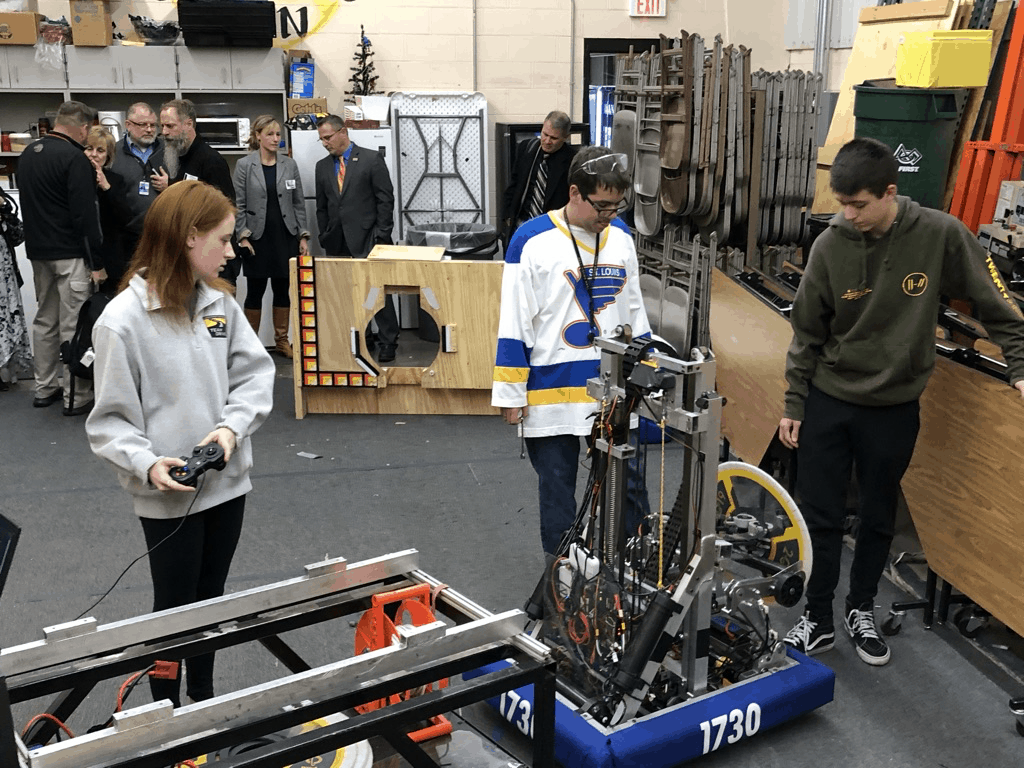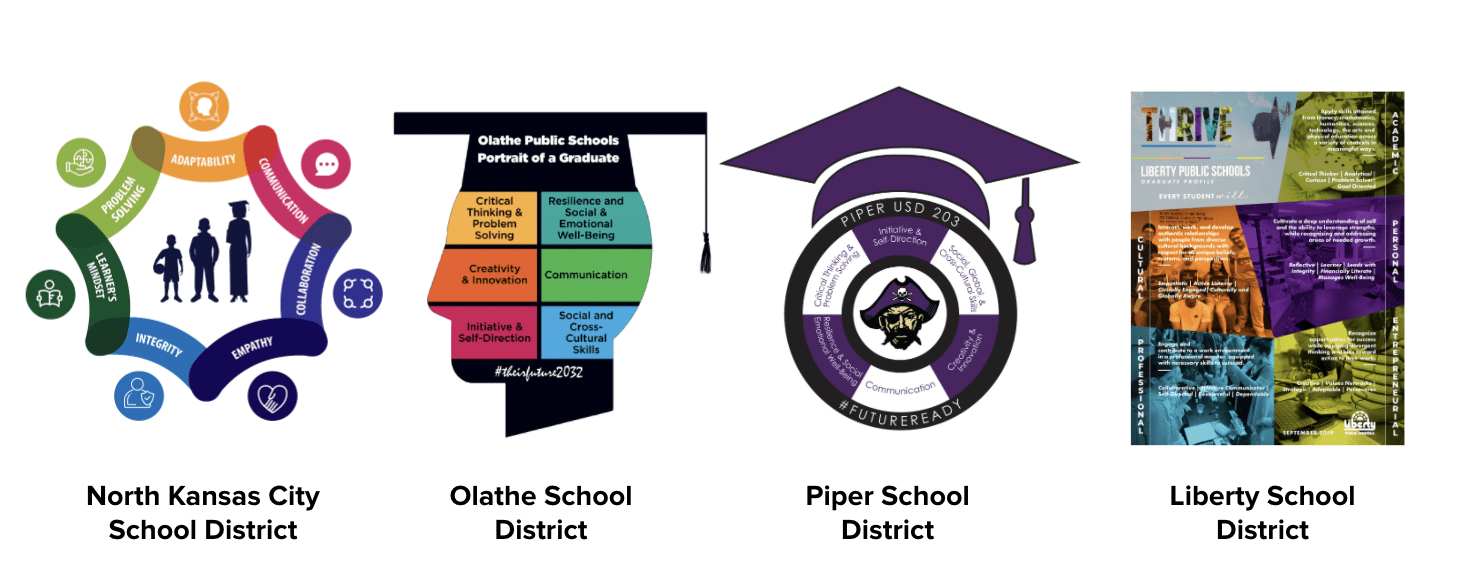5 Steps to Boost Real World Learning in Your System

“In a Real World Learning community, learners are prepared for work, school, and life after high school graduation. By gaining immersive experiences across a multitude of interests, industries, and employers through real-world projects and internships, learners gain the skills to navigate their future. Mutually, employers participate to help share and prepare today’s students to become the talent of tomorrow.”
Real World Learning is authentic to the learner, connected to the community, and valuable to both. It includes community-connected projects and entrepreneurial experiences, work-based learning, and credentials valued by employers.
The Ewing Marion Kauffman Foundation sponsors a Real World Learning initiative in metro Kansas City because it prepares the “region, students, and employers for the future.”
Would you like to see more real world learning in your community? There are five steps to expand access to high-engagement valuable learning experiences.
1. Make the Case for Change. New learning priorities and experiences require community conversations that lead to updated agreements. It’s more important than ever to host inclusive conversations including parents and students. It’s equally important to engage business and civic leaders that can describe emerging skill requirements for high-wage employment.
Chambers of commerce, workforce development boards, and business associations can all help make the case for priority skills–and make clear that real world learning is for all learners. This can help update and bridge the traditional separate career and technical pathways with college preparation.
While new agreements can be developed by one school community, there is a great benefit to new bargains across an employment market. In Kansas City, regional agreements help mobilize a six-county area including more than 75 high schools. The goal of the Real World Learning Initiative is to ensure that all students in the Kansas City region graduate with one or more valuable experiences called Market Value Assets (MVA) including:
- Work experiences: internships and client-connected projects
- Entrepreneurial experiences: starting a business or launching an initiative
- College credit: at least three classes
- Industry recognized credentials
Agreeing on priority experiences helps stakeholders see their role in the change process (e.g., it’s easier to visualize hosting an internship than teaching critical thinking).
2. Update Student Learning Goals. Employers are becoming more sophisticated about identifying skills critical to success on the job. The Essential Skills report sponsored by the DeBruce Foundation is a great example of evidence that can inform conversations about what graduates should know and be able to do.
As community conversations surface priority skills, they can be captured and organized into a Portrait of a Graduate. Hundreds of communities have used this approach to summarize new learning goals. Four Kansas City area examples are shown below.

New learning goals can be brought to life through communication, culture, and curriculum. North Kansas City prepared a video series with students explaining each of the competencies and incorporated them into career pathways for all learners.
Schools in the EL Education network work on priority skills in their character framework in their morning advisory called Crew.
Many priority skills are valuable preparation for internships and community-connected projects. They are also developed and demonstrated through real world learning experiences. Schools in the New Tech Network assess agency, collaboration, and communication skills in every integrated project.
3. Embed Real World Learning in Policy and Practice. To make real world learning widely experienced and sustainable, system leaders need to embed it in policy and practice.
Systems can build or adopt a high school model that embeds work-based learning and community-connected projects into every pathway (e.g., NAF, ConnectED, Diploma Plus, Ford NGL, New Tech Network, GPS Education Partners).
Governing boards can make priority learning experiences like internships and capstone projects a graduation requirement (these can be integrated into course credit requirements). They can incorporate priority learning experiences into high school and beyond plans drafted with learners in 8th or 9th grade and updated once or twice a year during high school. They can adopt an extended transcript that, in addition to a list of courses, includes credentialed skills, certificates, awards, and notable projects. (An extended transcript could summarize a portfolio of personal bests.)
Governing boards can also reduce policy barriers such as seat time and attendance requirements. They can ease credit for prior and outside learning, provide transportation to internships and community programs, and expand course credit for internships.
System leaders can jumpstart real world learning opportunities by sponsoring small academies and microschools that embed real world learning. In the Kansas City area, Liberty and Liberty North high schools both opened microschools rich with real world learning. Across town, Ray-Pec High and Ruskin High created half day programs with room for big integrated community-connected projects.
4. Develop Talent. Real world learning requires new skills and support for teachers including encouragement and professional development for project-based learning. Externships for teachers can help them gain a glimpse into the world of work. Visits to exemplary schools also aid in expanding their vision to know what’s possible.
Schools can expand their real world talent pool with creative staffing including leveraging alternative certification to land business and college-certified faculty. Small districts can share programs, staffing, and learning opportunities like three southern Kansas City districts– Grandview, Hickman, and Center. New positions like Community Partnership Coordinators can help facilitate business connections.
5. Invest in Support Structures. To help more young people succeed in real world learning experiences, education leaders can strengthen support systems.
Turnaround for Children’s approach to a tiered supports model recommends that schools create learning environments with more protective factors including health, mental and social service supports as well as extensive opportunities for exploration.
Secondary schools need strong advisory systems that monitor social and academic progress, connect to strong supports, build success skills, and spot real world learning opportunities.
Expanding access to real world learning requires community conversations resulting in new goals. Engaging community-connected learning requires new supports for students and teachers. Sustaining it across a system requires new policies and structures. The benefit of more real world learning is more equitable preparation for a complex future.
For more, see:
- New Changemaking Strategy Energizes Real World Learning in Kansas City
- Guidance Gap: The Biggest Challenge We Face and How to Close It
Stay in-the-know with innovations in learning by signing up for the weekly Smart Update.






TechyKids Canada
Very informative post an would help many to make learning more engaging and fun for young minds. Thanks for sharing and explaining it so well!